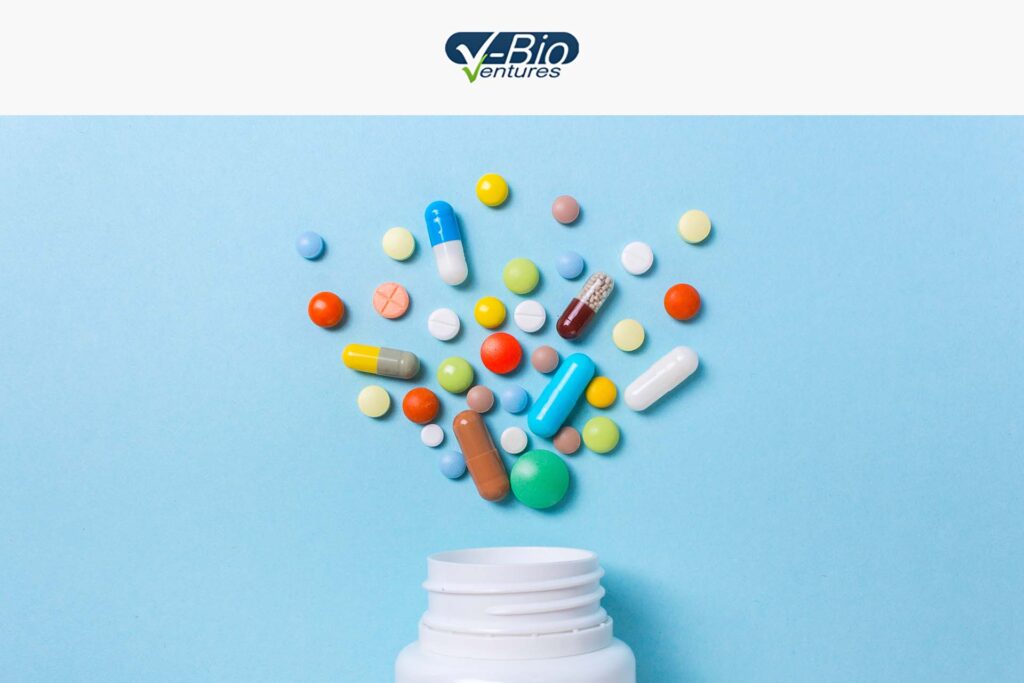

Antimicrobial Resistance has become an enormous challenge for global health, yet remains largely ignored by companies. As this deadly race worsens, we urgently need to address the huge mismatch between the need and incentive for developing new antimicrobial drugs.
It´s nearly 100 years since the discovery of penicillin by Sir Alexander Fleming. Since then, antibiotics have transformed modern medicine and saved millions of lives. But as we’ve observed in real time with COVID-19, the fight against infectious agents like viruses, bacteria, and fungi is a continual one – as soon as a potent medicine has been developed, it´s only a question of time until new resistant variants develop, and the race starts all over again.
For quite some time now, we’ve been successful in competing with microorganisms. But the situation is becoming frightening. A global survey published in The Lancet in January 2022 showed that in 2019 1.27 million global deaths were the direct result of Antimicrobial Resistance (AMR). To put that in perspective, this means AMR infections killed more people in a single year than HIV/AIDS (864,000 deaths) or malaria (643,000 deaths). A United Nations Interagency Coordination Group on AMR estimates that this number could swell to 10 million per year by 2050 if we don’t take more action.
How has the situation become so dire, so quickly? And why, despite the huge unmet medical need, are hardly any pharma or biotech companies developing new drugs to counter AMR?
A costly evolutionary arms race
All infectious pathogens naturally develop AMR as a means to stay alive, a process which represents a major challenge to the treatment of infectious diseases. In 2019, more than 2.8 million drug-resistant infections occurred in the U.S. alone, and resistant bugs killed more than 35,000 people. Similar numbers are reported for Europe.
The names of the worst killers are known: S. aureus and Enterococcus species, Clostridium difficile, Enterobacteriaceae (mostly E.coli and Klebsiella pneumoniae), Pseudomonas aeruginosa, Acinetobacter, and Candida auris (a fungus). The most worrisome seem to be the Gram-negative pathogens, which are fast becoming resistant to nearly all the antibiotic drug options available, creating situations reminiscent of the pre-antibiotic era where a simple wound or operation has the potential to be life threatening.
In addition to the burden on patients and their families, the cost of AMR to the economy is significant. Along with mortality and morbidity, prolonged illness results in longer hospital stays, use of more expensive medicines, and greater financial challenges for those impacted. It is estimated that AMR already costs the EU €1.5 billion per year in healthcare costs and productivity losses, a figure which is only likely to rise dramatically.
How did it come to this?
There are several factors that clearly facilitated the rapid development of these dangerously resistant strains. In the past decades, we have dramatically and carelessly overused antibiotics. They have been inappropriately prescribed for wrong indications (e.g. viral infections), or used incorrectly (e.g. by patients not finishing a full course of treatment). Antibiotics have also been used extensively as growth supplements in the livestock industry, leading to resistance either due to direct consumption of animal products or indirectly through the use of livestock excrement as fertilizer in agriculture.
These issues have been gaining recognition over the last years, and an increasing number of countries are implementing programs to limit irresponsible use of antibiotics in medicine as well as agriculture. However, these measures can only slow our spiraling descent into danger, not deal with the resistance that has already arisen.
Why, despite the huge unmet medical need, are hardly any pharma or biotech companies developing new drugs to counter AMR?
To tackle the building crisis, we desperately need more tools to combat resistant microbes. But despite the huge unmet need for more and novel antimicrobial agents, such drugs have not been forthcoming. In fact, less and less new antibiotics are reaching the market – the last truly novel class of antibiotic was discovered in the late 1980s.
The key reason is that discovering and bringing antibiotics to the market is no longer profitable for pharmaceutical companies. A 2017 estimate puts the cost of developing an antibiotic at around $1.5 billion. In contrast, industry analysts estimate that the average revenues generated from an antibiotic’s sale is roughly $46 million per year.
Given the limited supply of new antimicrobials and increasing rates of AMR, doctors are rightfully being encouraged to prescribe new antibiotics only after exhausting all other options. While it makes sense to keep the new drug as a last resort for those patients with no other options, for the pharma company that developed the drug it results in marginal revenues that hardly justify the risk, time, and costs for developing the new agent. As a result, there is currently an enormous mismatch between need and incentive for developing new antimicrobial drugs.
How to fix a broken market
Over the past years, there have been a few attempts to fix this problem. For example, in 2018 NoVo Holdings launched the $165 million REPAIR Initiative (Replenishing and Enabling the Pipeline for Anti-Infective Resistance). The aim is to help biotech companies developing new antibiotics to generate first clinical data, which might enable them to strike deals with pharma companies for further development.
A similar program called CARB-X was established in 2016 with funding from government agencies in the US, Germany, and the United Kingdom, as well as foundations and charities like the Wellcome Trust and the Bill & Melinda Gates Foundation. Unfortunately, both programs have run into the same problems: most pharma companies have moved away from antibiotics and have no interest in taking up new programs, even when developed and largely paid for by others.
To overcome this issue, other initiatives have been launched to instead explore new business models. The subscription model is already being pursued in the UK and has now also been proposed in the US (The PASTEUR Act). The subscription model functions by annually paying contractually agreed-upon amounts to companies developing new antimicrobials, based on the clinical need and novelty of the drug, irrespective of the actual volume of antimicrobials used.
In addition, the AMR Action Fund has been set up through a concerted action from the pharmaceutical industry, global philanthropies, and development banks to bring 2-4 new antibiotics to patients by 2030. Of course, while these initiatives are a step in the right direction, much more remains to be done.
Uniting against a common enemy
Developing new drugs is a risky business. Without a lucrative potential return, pharma companies will remain reluctant to dedicate substantial resources to the difficult and chancy development of new antimicrobials. Young biotech companies – ever more the drivers of innovation for the pharma industry – will also struggle to obtain VC funding due to the investors’ perceived lack of an attractive exit.
What we desperately need is a joint global initiative – by stakeholders including governments, pharma industry, VCs, biotechs, and key agencies and foundations – to develop attractive new models for antimicrobial drug development and provide global access to new antibiotics. We know that this kind of worldwide mobilization is possible – we have seen it in the fight against COVID-19. That same zeal now needs to be applied to the hidden pandemic of AMR.
